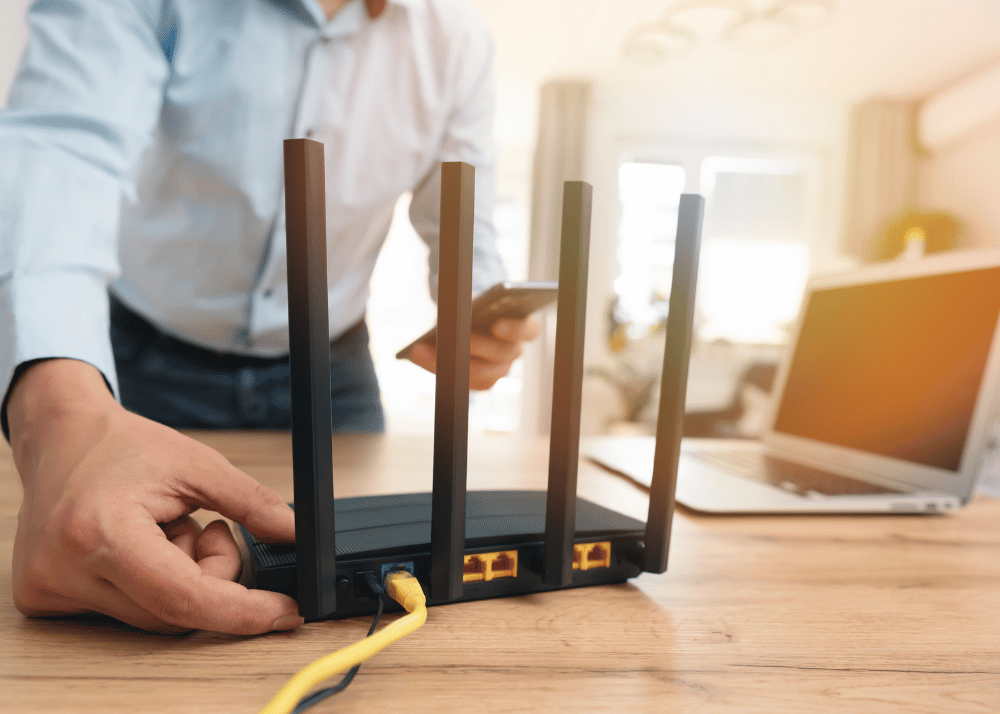In today's connected world, having a reliable and fast internet connection is essential. Whether you're working from home, streaming movies, or gaming online, a seamless home network is crucial to ensure uninterrupted access to the digital world. However, some households face challenges such as Wi-Fi dead spots, slow speeds, and connectivity issues. If you're a beginner looking to improve the quality of your home network, this comprehensive guide will provide you with practical tips and solutions. From optimizing your router placement to exploring advanced technologies like mesh networks, we'll cover everything you need to know to create a seamless home network.
Understanding the Challenges of a Home Network
Before diving into the solutions, let's understand the common challenges faced by home networks. These challenges can vary depending on factors like the size and layout of your home, the number of connected devices, and the presence of physical barriers. Here are some key challenges:
Wi-Fi Dead Spots
Wi-Fi dead spots are areas in your home where the Wi-Fi signal is weak or nonexistent. These dead spots can be caused by physical barriers like walls, floors, and appliances that obstruct the signal. Identifying these dead spots is the first step toward improving your home network.
Slow Internet Speeds
Slow internet speeds can be frustrating, especially when you're trying to stream high-definition videos or play online games. Factors like distance from the router and outdated router firmware can contribute to slow speeds.
Connectivity Issues
Intermittent connectivity issues can disrupt your online activities and cause frustration. These issues can be caused by interference from other electronic devices, outdated network equipment, or outdated network configurations.
Now that we understand the challenges let's explore practical solutions to create a seamless home network.
Optimizing Router Placement
One of the simplest and most effective ways to improve your home network is by optimizing the placement of your router. The location of your router plays a crucial role in the strength and coverage of your Wi-Fi signal. Here are some tips for optimal router placement:

Centralize Your Router
Position your router as centrally as possible in your home. This allows for better signal distribution and minimizes the impact of physical barriers like walls and furniture. Avoid placing your router in corners or hidden areas as this can limit the coverage area.
Avoid Obstructions
Keep your router away from physical barriers that can obstruct the Wi-Fi signal. Walls, appliances, and large furniture can significantly reduce signal strength. Consider placing your router on an elevated surface to minimize obstructions.
Minimize Interference
Avoid placing your router near electronic devices that can interfere with the Wi-Fi signal. Devices like microwaves, cordless phones, and baby monitors operate on similar frequencies and can disrupt the Wi-Fi signal. Keep a safe distance between your router and these devices.
Leveraging Wired Connections
While Wi-Fi is convenient, wired connections can offer faster and more stable internet access. Consider using wired connections for devices that require high bandwidth or are located near the router.
Ethernet Connections
Ethernet connections provide a direct and reliable connection between your device and the router. By connecting your devices via Ethernet cables, you eliminate the interference and signal degradation associated with Wi-Fi. Use Ethernet connections for devices like gaming consoles, smart TVs, and desktop computers for optimal performance.
Upgrading Your Router
If you're experiencing persistent issues with your home network, it may be time to consider upgrading your router. Modern routers offer advanced features and improved performance, allowing for faster and more reliable internet access.
Wi-Fi 6 Routers
Wi-Fi 6, also known as 802.11ax, is the latest generation of Wi-Fi technology. Wi-Fi 6 routers offer improved speeds, increased capacity, and better performance in crowded environments. Consider upgrading to a Wi-Fi 6 router if you have multiple devices and experience network congestion.
Mesh Network Systems
Mesh network systems are designed to provide seamless coverage throughout your home by using multiple access points. A mesh network consists of a primary router and several satellite nodes that work together to create a unified network. This eliminates Wi-Fi dead spots and ensures consistent internet access in every corner of your home.
Troubleshooting Common Issues
Even with optimal router placement and the latest technology, you may still encounter some common issues with your home network.
Manage Bandwidth Usage

If you have multiple devices connected to your home network, managing bandwidth usage is crucial. Bandwidth-intensive activities like streaming videos or downloading large files can monopolize the network, causing slow speeds for other devices. Consider using Quality of Service (QoS) settings on your router to prioritize certain devices or applications.
Optimize Channel Selection
Wi-Fi channels can become crowded, especially in areas with multiple networks. Choose the least congested Wi-Fi channel on your router to minimize interference and improve performance. You can use tools like Wi-Fi analyzer apps to identify the least congested channels in your area.
Investing in Network Extenders
If you have a large home or experience Wi-Fi dead spots in certain areas, network extenders can help improve coverage. Network extenders, also known as Wi-Fi repeaters or range extenders, amplify the Wi-Fi signal and extend its reach.
Wi-Fi Repeaters
Wi-Fi repeaters receive the existing Wi-Fi signal from your router and rebroadcast it, extending the coverage area. Place the repeater in a location where the Wi-Fi signal is still strong, and it will amplify and extend the signal to reach areas with weak coverage. However, repeaters may reduce the overall network speed.
Mesh Network Extenders
If you're looking for a more comprehensive solution, consider adding mesh network extenders to your home network. Mesh network extenders work in conjunction with a mesh network system, providing additional coverage and eliminating Wi-Fi dead spots. These extenders seamlessly integrate with the existing mesh network, ensuring a unified and reliable network throughout your home.
Conclusion
Creating a seamless home network is within your reach, even as a beginner. By optimizing router placement, leveraging wired connections, upgrading your router, troubleshooting common issues, and investing in network extenders, you can significantly improve the quality of your home network. Remember to regularly update your router firmware, manage bandwidth usage, and select the optimal Wi-Fi channels for better performance. With these tips and solutions, you can enjoy uninterrupted internet access in every corner of your home, empowering you to work, stream, and connect with ease.
Investing in a reliable and high-speed home network from Dobson Fiber is an investment in your digital lifestyle. As a service provider committed to community empowerment in Oklahoma and Arkansas, we offer no-contract plans and simple pricing options to ensure flexibility and convenience for our customers. Join our community of satisfied customers who enjoy fiber-fast internet speeds and reliable connections. Our dedicated support team is available to assist you with any home network issues or questions you may have. Contact us today to get started on creating your seamless home network.
Tags:
August 14, 2023 at 12:00 AM

.png?width=200&height=74&name=dobson-fiber-logos-hor_white_R%20(3).png)